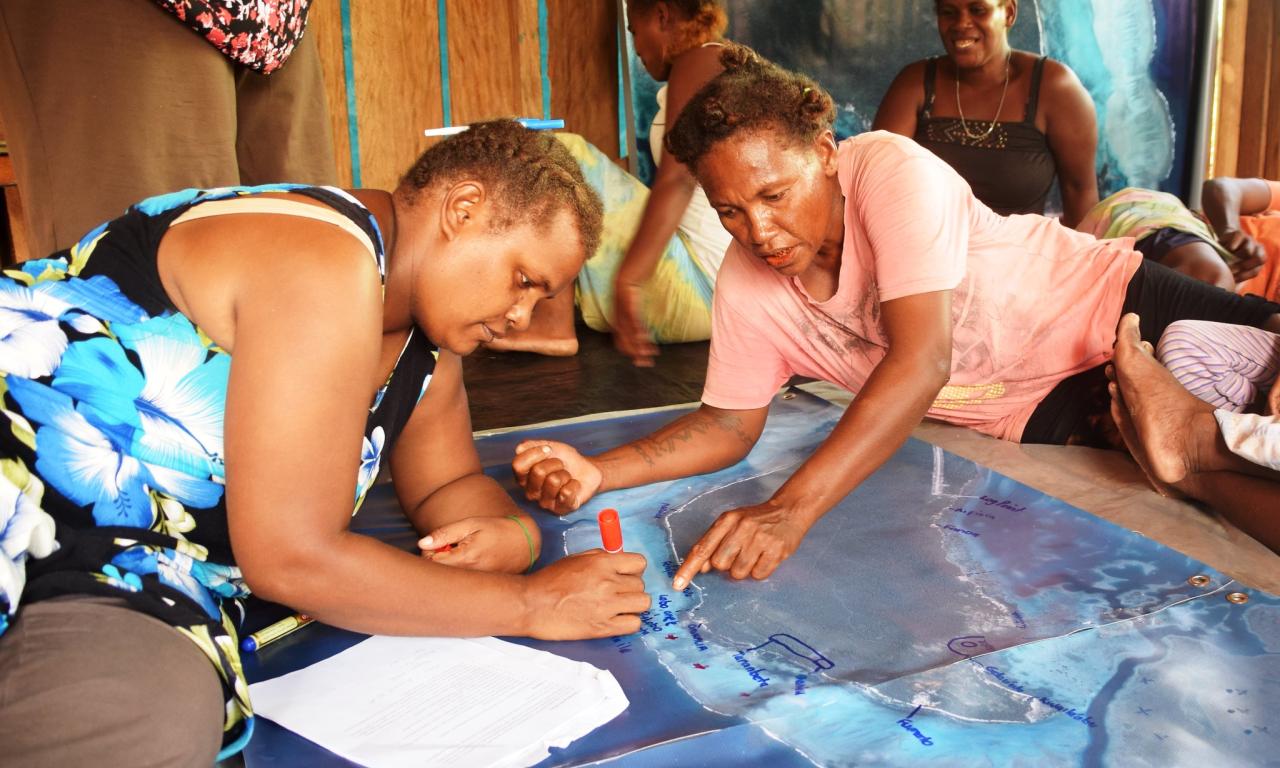
-
WorldFish researchers have developed a framework to increase inclusivity within community-based natural resource management (CBNRM) activities.
-
This flexible framework is designed to more deeply examine the factors that aid or hinder inclusivity within a community.
July 28 marks the 2022 instance of Earth Overshoot Day, the date when humanity’s demand for ecological resources and services in a given year exceeds what Earth can regenerate in that year.
WorldFish advocates for equitable and sustainable resource management across the Pacific. In one such effort, WorldFish researchers have written Assessing inclusion in community-based natural resource management: A framework and methodology to aid in the development of equitable, inclusive and sustainable resource management tools at the community level.
Community-based natural resource management (CBNRM) is a common governance approach, which posits that local communities reliant on a specific resource have the right to manage it, are the most knowledgeable about that resource and as a result know the best ways to manage it. This approach gives agency to local communities rather than external stakeholders, as the former has both width and depth of knowledge needed, based on interacting with and managing specific resources every day.
However, even though CBNRM is more inclusive in principle than other methods, it does not always address pre-existing intra-community barriers that prevent less powerful groups from participating equitably in gender-inclusive CBNRM decision making. In fact, sometimes, CBNRM might reinforce these impediments.
“In our research, we examined many CBNRM initiatives and found that while they all aimed to increase inclusion of women, this was often only measured by counting the number of women attending meetings or events,” said Philippa Cohen, a co-author of the publication.
However, simply attending a meeting does not always represent meaningful inclusion. A woman in a group session is potentially subject to a myriad of factors that limit her ability or desire to contribute to the conversation.
“A person’s experience of inclusion can be impacted by their gender and other markers of social identities, such as age, class and ethnicity,” said Cohen.
To create a more nuanced framework, the WorldFish-led research team under the CGIAR Research Program on Fish Agri-Food Systems (FISH CRP) program established five metrics on a continuum that can help measure inclusivity: attendance, understanding, sharing, being valued and decision-making.
Each factor represents a discrete element of governance that together adds up to inclusive decision-making. As metrics, they assess the degree to which different people experience varying levels of inclusion and exclusion.
“Traditional CBNRM models rarely recognize the fact that there are multiple and often subtle aspects at play determining who is included and excluded within a community,” said Cohen.
Testing the framework in the Pacific
The researchers piloted the framework and methodology in 14 communities in the Solomon Islands between 2019 and 2020 in relation to the CBNRM of fisheries.
The Five Degrees of Inclusion Framework and Methodology represents progress towards conceptualizing and quantifying these varied and complex issues.
“Differences in inclusion or exclusion because of other markers of social identity, such as wealth, life stage and social standing, are often overlooked and not addressed in CBNRM models,” said Cynthia McDougall, another co-author of the publication.
The authors used a variety of techniques, including semi-structured interviews, surveys and focus group discussions, to gather and measure data and feedback from members of the community in the Solomon Islands. The researchers designed the methods to be adapted and implemented to fit the context and the capacities of specific communities.
What to do with conflicting data?
Data and feedback from multiple methods in the methodology increase a researcher’s ability to interpret and understand the results. The methodology encourages rough triangulation, to check the results found in one method with the results found in different methods.
Analysis and interpretation of the data should identify consistent trends, patterns, and themes. In this methodology, however, differences in the results are just as important to identify and attempt to explain.
“One way to examine more in-depth findings is through qualitative data, such as direct quotations, that illustrate or explain a trend, pattern or important anomaly,” said McDougall.
“You will find instances where data corroborate and where they differ,” said McDougall, “and places, where the results differ, are rich for exploration and for gathering a more complete picture of the community and its internal diversity and challenges and opportunities for equity.”
With the Solomon Islands pilot of the framework and methodology, researchers found that age was an important factor in helping to explain attendance, speaking, inclusion and respect.
The authors believe their Five Degrees of Inclusion Framework and Methodology will interest data- and evidence-oriented agencies and actors in the Pacific who are committed to inclusion, gender equity and fair management and governance pursuing sustainable resource management.
